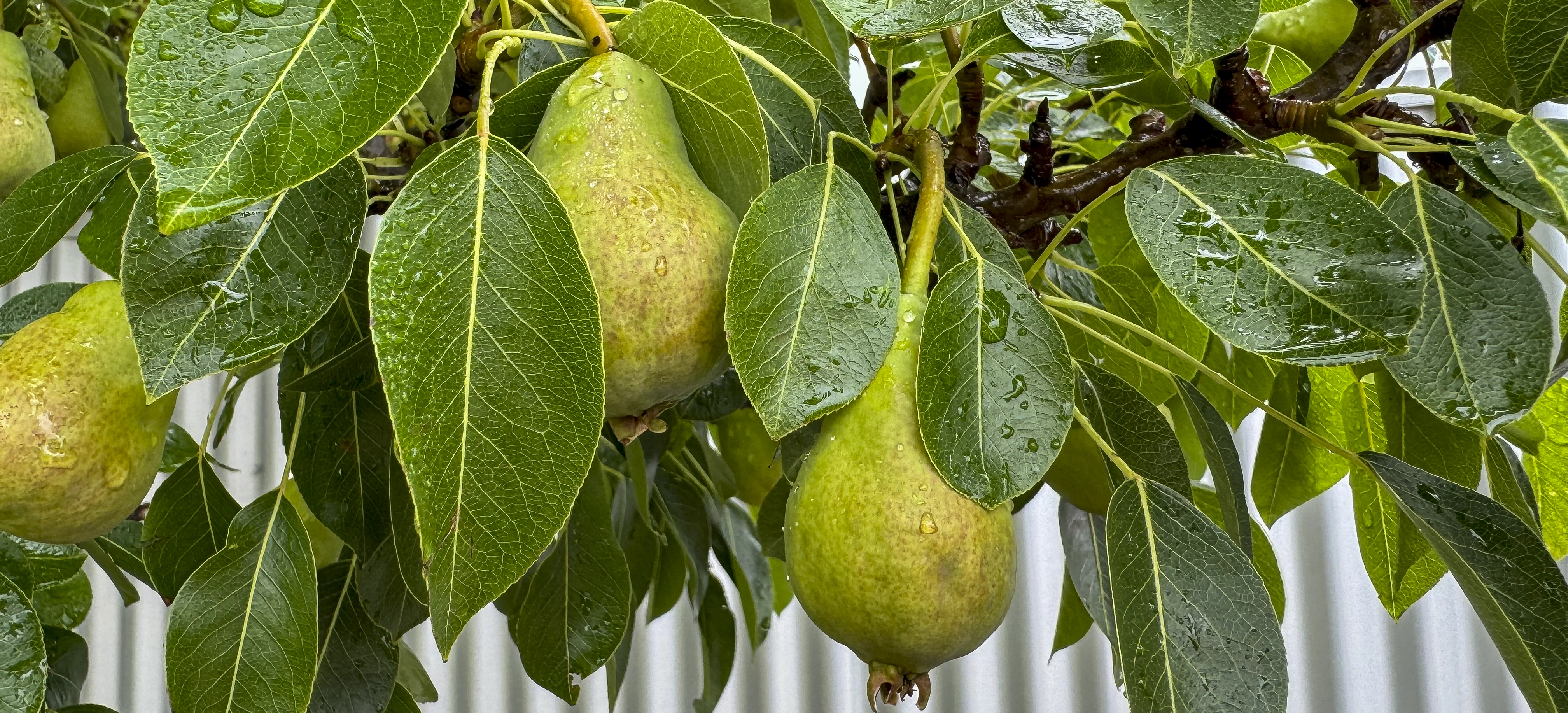High Dumpsiedeary Jam
- Recipes
- Jams, Jellies & Marmalades
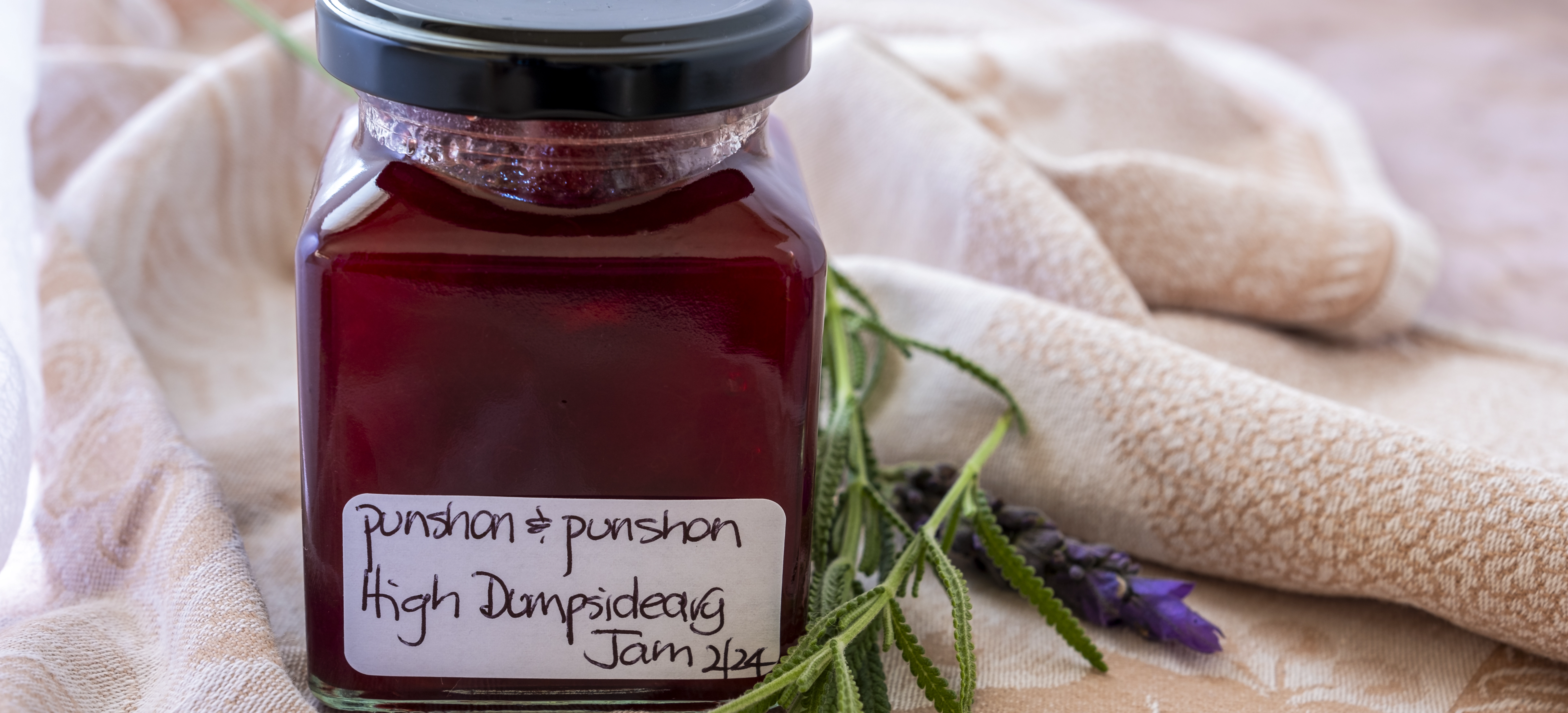
Looking for something different to deal with a glut of apples, pears and plums? Rich in colour and flavour with the addition of ginger and a touch of spice, this is perfect for plum jam lovers that are seeking something a bit more special. While its origins are unclear, some advocating it comes from Worcestershire, others Gloucestershire, and it’s said that Mr Dumpsiedeary made the jam from the orchard’s harvest glut when the household ran out of jam. Sometimes it’s known as High Dumpsie Dear or just Dumpsy Deary, either way it’s an endearing name and is a sumptuous medley of apples, pear and plum.
- Preparation Time:
- 40 minutes
- Cooking Time:
- 45 minutes
- Quantity:
- 6 x 300 ml jars
PREPARATION
Hot dry sterilised sealable glass jars and lids ready for the bottling stage
Warm sugar
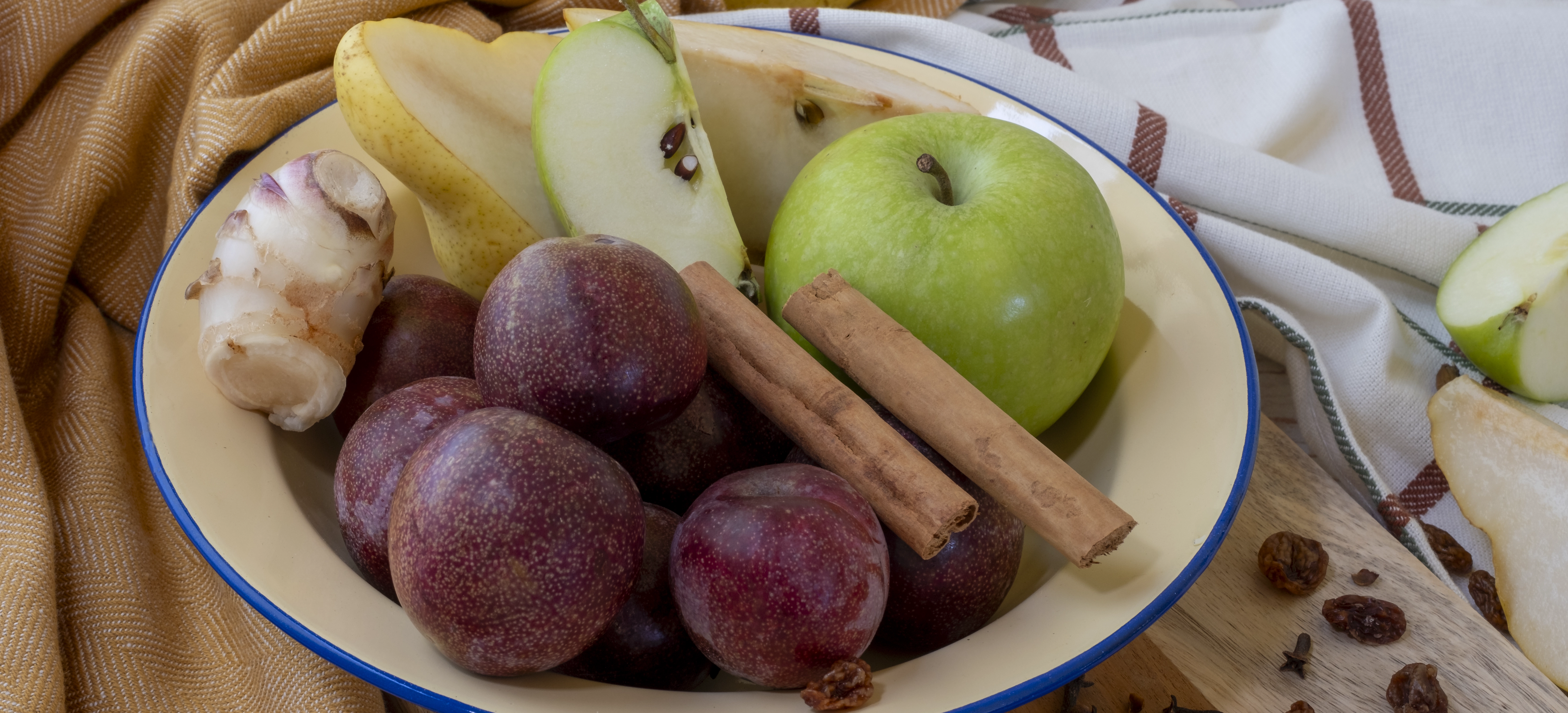
INGREDIENTS
- 500g
- Red plums, ripe
- 500g
- Granny Smith apples
- 500g
- Pear, not over ripe
- 15g
- Fresh ginger
- 1
- Lemon, juice and rind
- 1
- Cinnamon stick, 5 cm
- 2
- Whole cloves
- 25g
- Raisins
- 1.3kg
- White sugar
- 150ml
- Water
- 1 teaspoon
- Butter, unsalted
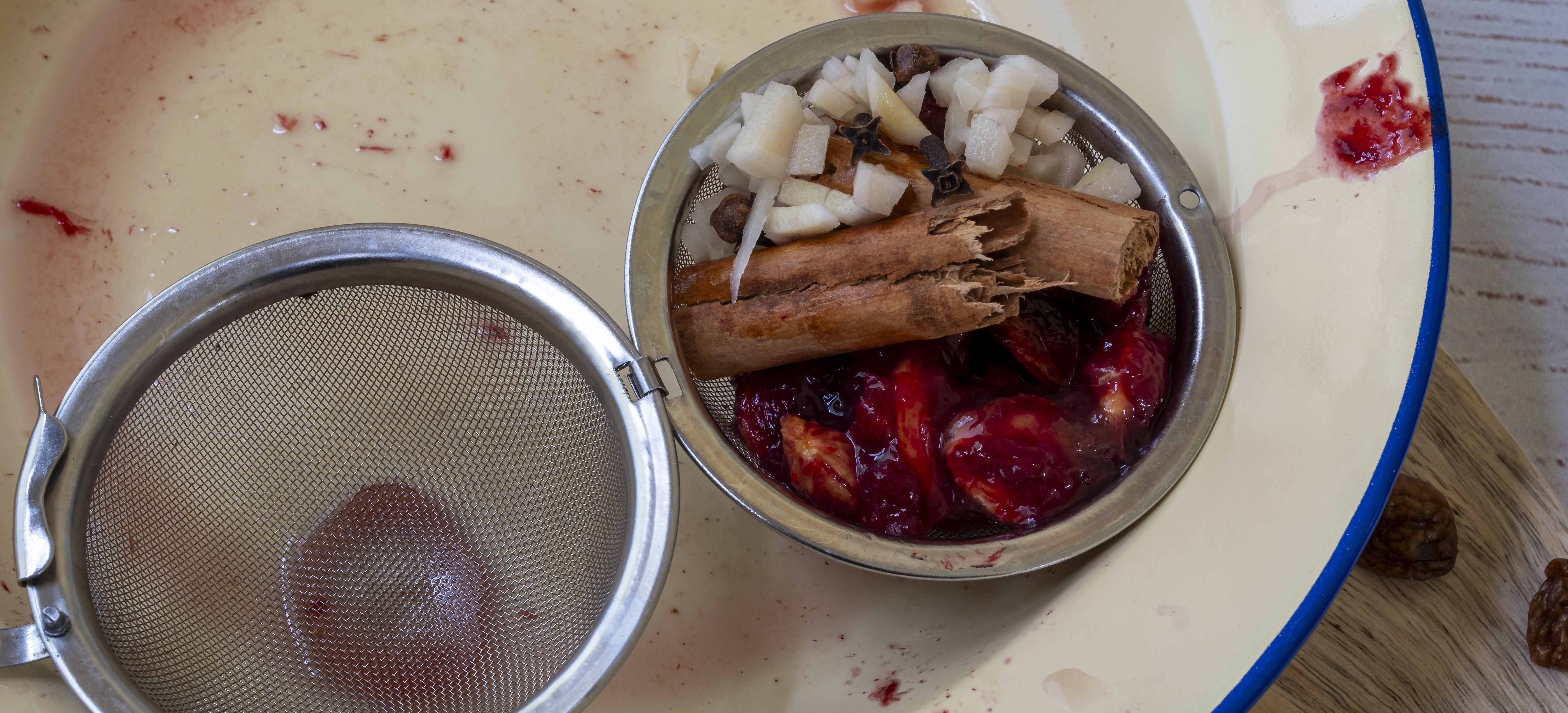
METHOD
Wash and gently dry the apples, plums and pears to remove dirt or unwanted residues and garden debris.
Cut the plums in half and remove the stones. Peel the ginger and finely chop. Put both ingredients aside. Make a spice bag, refer to the Notes Section: How to make a Spice Bag, and place the plum stones, cloves, cinnamon stick (break in half), chopped ginger and lemon rind and securely tie with kitchen twine. Alternatively, place the spice bag ingredients into a large closable tea-infuser.
Peel and core the apples and pears and dice the plums, apples and pears. Place in a large stainless steel preserving pan or a heavy bottomed stainless-steel pot. Discard the cores and peels.
Add the water, lemon juice, spice bag, and raisins and bring to the boil. Then simmer for approximately 20 minutes or until the fruit is soft. Stir occasionally to prevent the jam from sticking to the bottom of the pan.
In the meantime, sterilise the jars and lids and have them hot and dry ready for the bottling stage.
Remove the spice bag and add the warmed sugar. Refer Notes Section: How to Warm Sugar. Stir until it’s completely dissolved. Then bring to the boil and boil rapidly until the jam reaches the setting point.
Remove it from the heat,place on a heat resistant board and allow to sit for 5 minutes. If bottled immediately it’s likely any fruit pieces and the raisins will rise from the bottom of the jar.
Using a sharp-edged spoon or ladle, remove the scum that accumulates around the edge of the pot. If any scum persists, add the butter and swirl it around. Refer to the Notes Section: Removing the Scum for further information.
Using a wide-necked funnel, ladle into warm sterilised jar to within 2.5 cm (1 inch) from the top, distributing the fruit evenly between the jars.
Seal immediately with hot dry lids. The HHH method of HOT dry jars, HOT dry lids and HOT jam creates a vacuum seal as it cools. The “popping” sound, often heard in the kitchen, signals a successfully vacuum sealed jar. This method of sealing is preferred as there is reduced risk of contamination prior to sealing.
If there are no lids, seal with paraffin wax while the jam is hot and cover with cellulose or plastic film and secure with a rubber band or kitchen twine. Refer to the Notes Section: Sealing with Paraffin Wax below for more detailed instructions on sealing with paraffin wax. Alternatively allow jam to cool completely and seal with a screw top lid.
Allow the jars to cool, wipe down to remove any spillage and label.
Store in a cool dark place in the kitchen or pantry.
Mature the jam for at least 2 weeks before eating.
NOTES
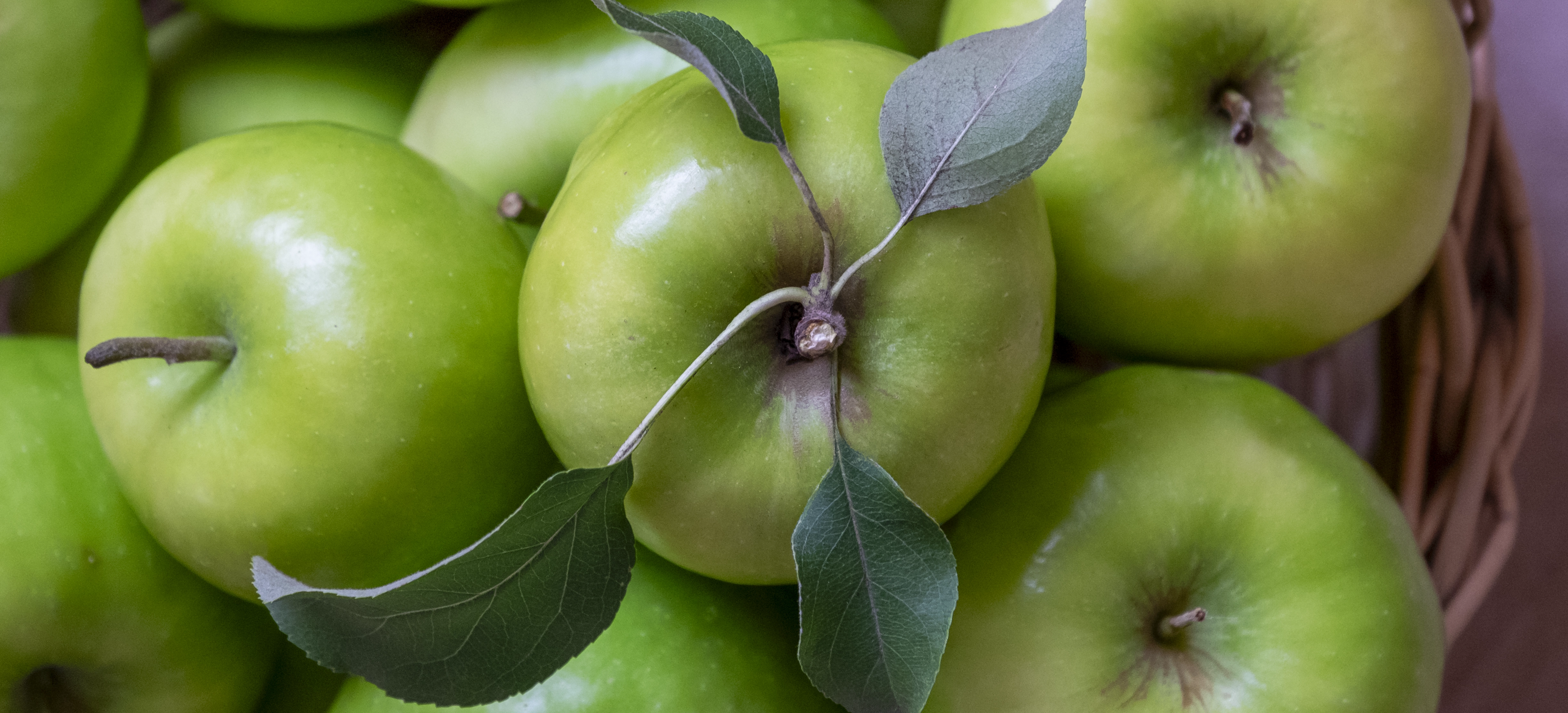
- Plums and apples have a medium-high acid and pectin content, so this jam will set easily.
- Choose ripe but not over ripe or mushy fruit and never use mouldy fruit as this will produces a poor-quality jam.
- To Make Spice Bag. Drape a square of muslin or calico over a basin. Place the spices outlined in the recipe into the cloth.
- Gather up the corners and make a bag by tying it up with kitchen string approximately 2 cm above the spices.
- Always allow room between the tie point and spice mixture so the water can bubble through the bag easily. This helps to extract as much flavour as possible from the contents. Discard the spices, unless otherwise specified in the recipe once the bag has been removed from the preserving pan.
- Wash, dry, and keep the cloth for the next batch. My tea towel draw has a range of different sized cloths that are on hand for my preserving sessions. Alternatively use a large stainless steel tea infuser.
- Kitchen twine is also know as butcher’s twine or cooking twine. It’s made from either 100% cotton, linen, or a cotton/polyester blend. The best and safest to use is the 100% natural unwaxed cotton as twine as it withstands long cooking, does not impact flavour into cooked food and is food safe. Do not use synthetic twine made from either polypropylene or polyester of a blend of these with a natural twine as they aren’t oven safe. If you purchase a natural kitchen twine it will be safe for all you cooking needs. It is sold in kitchen equipment or stores that sells twines.
- If you do not have a preserving pan, use a large heavy bottom pot, preferably stainless steel. This will distribute the heat evenly across the pan and the jam while it is cooking. Ensure there is enough space available in the pot for the mixture to double in size while it is rapidly boiling.
- To warm the sugar Place the recipe quantity in an oven proof container and place in a preheated 150 degrees C oven for approximately 10 minutes.
- The sugar should be warm throughout the bowl. Warmed sugar dissolves quickly and then a rapid boil, until the setting point is reached, helps to preserve the fresh fruit flavour. Long slow simmering of the jam affects the colour and reduces the flavour of the jam. Ensure the sugar has completely dissolved before boiling otherwise the sugar may crystallise later in the jar
- If for some reason a jam doesn’t set don’t discard it. It can either be re-boiled to reach its setting point or used as a delicious sauce to accompany cake, dessert or spooned lovingly over ice-cream.
- Good quality jars should be used in all preserving, particularly when they are processed in a hot water bath. Thin jars often cannot withstand the temperatures and may crack either in the bath or on and or after removal. Avoid the disappointment and invest in some good jars from a homewares or preserves outlet.
- Cooking times are an approximation only. They are provided as a guideline as cooking times are influenced by the type of pot and its diameter and height, speed of cooking and fruit ripeness, size, and moisture level.
- Removing the scum
- Jam, jellies, and marmalades can produce a scum while they are boiling. Impurities from the fruit and sugar will rise to the surface and a fine frothy foam will move towards the edge of the preserving pan.
- Some fruits will produce more scum than others.
- This is a natural self-clarification process and makes the task of making a high-quality preserve easier. Removing the scum increases the preserve’s clarity. This is very important if it is being submitted for competition. Remove the scum before bottling.
- Using a stainless-steel spoon, skim the scum from around the edge of the preserving pan.
- Be careful to remove just the scum and not the jam. This can be done while the jam is boiling and/or once it has been taken off the heat.
- Do not attempt to remove the scum from the centre of the boiling jam, as there is an elevated risk the jam will splutter and hot jam burns.
- Sealing Paraffin Wax
- Paraffin wax is available in speciality preserving stores and some rural hardware stores.
- The melted wax must be poured over the preserve while both are hot.
- Break the wax into small pieces and heat in a bowl set over a pan of hot water. Bring the water to the boil, reduce the heat to maintain a gentle simmer until the wax is just melted.
- Do not overheat. If it gets too hot it will shrink away from the sides of the preserving jar as it cools. This will break the seal and allow impurities to access the contents, encouraging mould growth.
- Working quickly pour a thin layer over the hot preserve. Using a small wooden cocktail stick, toothpick, or cake skewer, prick any air bubbles.
- Allow the wax to set. Then pour a second thin layer to make a seal approximately 3mm thick.
- When the wax has set it will become opaque and dip slightly in the middle.
- Cover the jar with cellophane disc and secure with a rubber band film.
- To use the preserve, break the wax seal and remove. Discard or wash thoroughly, dry and re-use latter as required.
- Sealing with wax is not a long-term solution. Use within a couple of months. Once opened store in the fridge.
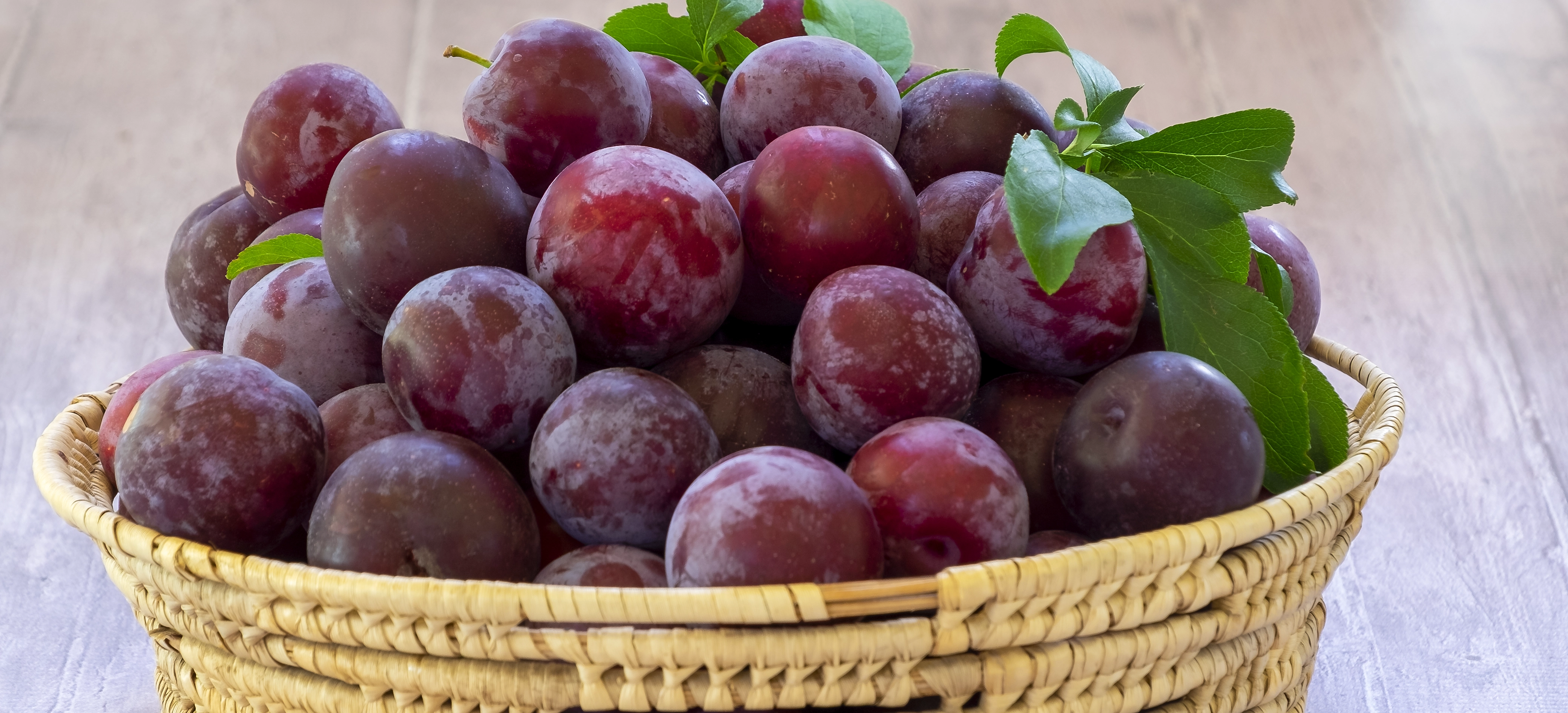
- Cinnamon (Cinnamomum verum)
- Contains sweet and aromatic flavours. It does not taste sweet, rather it enhances the perception of sweetness in other ingredients. It can draw out sweet notes in savory dishes. Cinnamaldehyde is the main flavour compound and is sensed by the temperature sensors on the tongue, giving cinnamon a warming quality.
- Cinnamon sticks keep their flavours for up to a year. Keep in an airtight container and store in a cool dark place in the pantry or kitchen. The lighter brown, thinner more fragile sticks are higher quality.
- Inner layers of bark are dried in the sun and rolled together by hand to make “quills.”
- Cinnamon and cassis are distinctly different in appearance and flavours profile.
- Ginger (Zingiber officinale)
- Ginger has a hot-spice, citrusy woody taste. It’s available as a fresh underground stem, a rhizome, as a finely ground powder and preserved in sugar. The dried and preserved version is used in baking, powdered is also used in spice blends whereas fresh ginger is used widely in Asian cuisine.
- Do not substitute dried ginger for fresh, when specified in a recipe, as the dried form has a stronger and more aromatic flavour.
- When purchasing fresh ginger, avoid older rhizomes with signs of shrivelling as the plant is drying out and the flesh can be fibrous.
- Variations
- The proportion of the three fruits can be changed, however use a total of 1.5 kg of fruit. The changed proportions will slightly vary the final flavour but will still be delicious.
- Substitute the raisins with dried cranberries or omit the dried fruit component altogether
